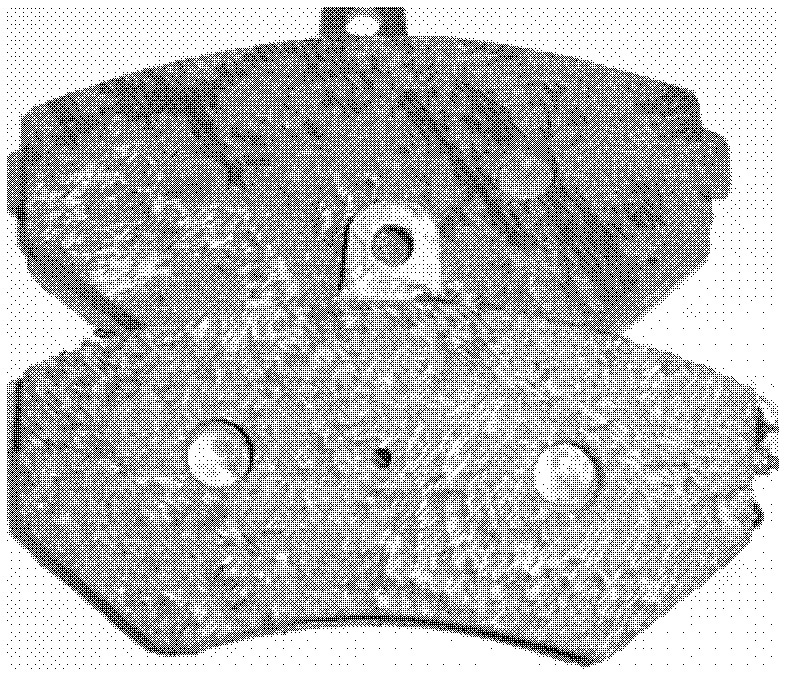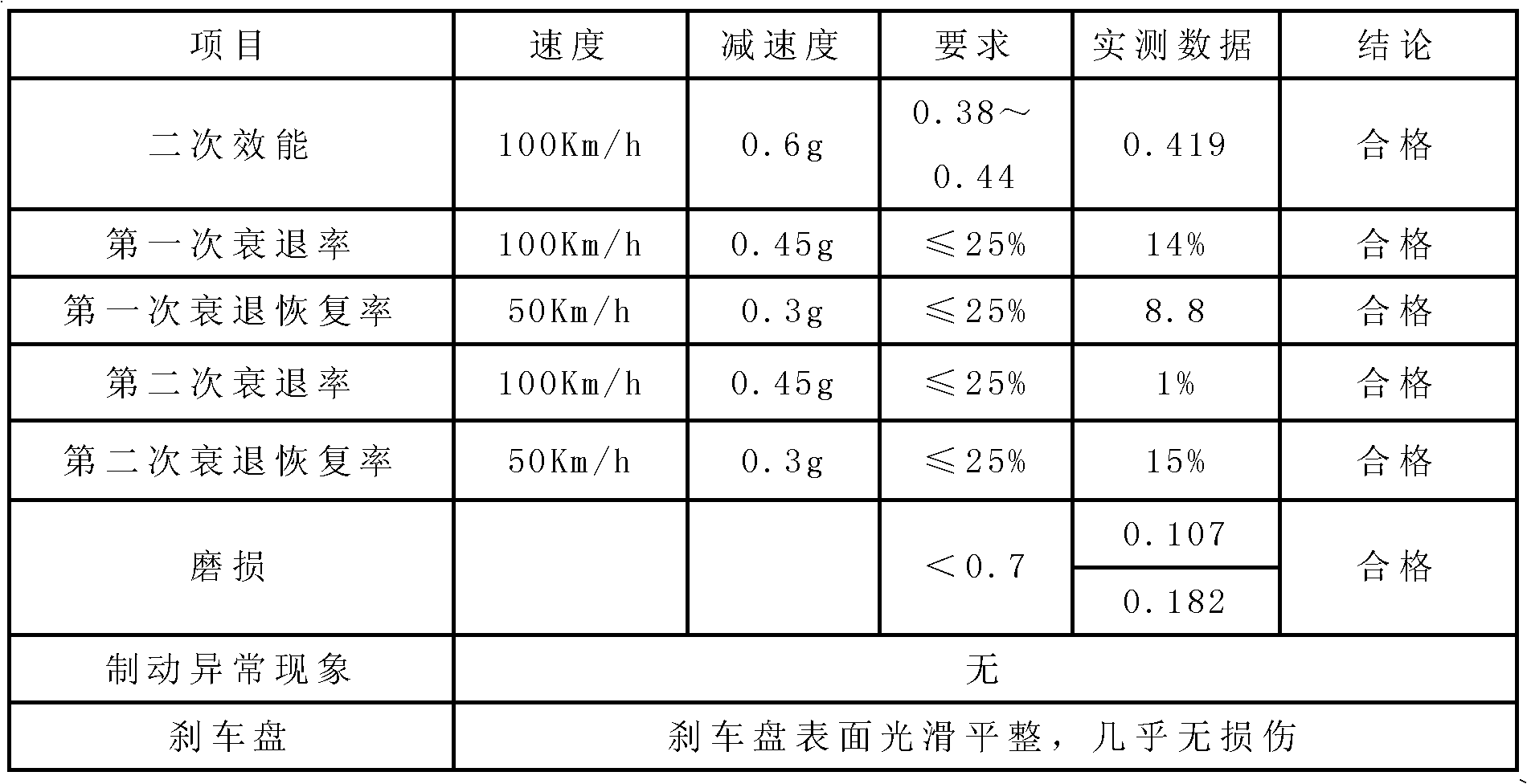Producing method for carbon fiber reinforced ceramic matrix automobile brake pad
A manufacturing method and carbon fiber technology, which are applied in the field of automobile brake pads, can solve the problems of reduced adhesion, poor temperature resistance, rise, etc., and achieve improved service life and high temperature resistance, simple and feasible preparation method, and thermal decay performance. Good results
- Summary
- Abstract
- Description
- Claims
- Application Information
AI Technical Summary
Problems solved by technology
Method used
Image
Examples
Embodiment 1
[0034] (1) First, select carbon fibers with a length of 10 mm to 80 mm according to the ratio, and open them into fluffy single fibers through an opening device, then air-laid the opened carbon fibers into a web, and then use a web-laying machine to lay them into fibers The net is prefabricated into a single-layer mesh tire; then the single-layer tire mesh is superimposed layer by layer, and the carbon fiber bundle is introduced into the carbon fiber bundle perpendicular to the laying direction by a relay-type needle punching method to make a density of 0.20g / cm 3 full net tire;
[0035] (2) Under an argon protective atmosphere, the prefabricated body is subjected to a high-temperature heat treatment at 1600°C for 5 hours, and the pressure is a slight positive pressure, which is slightly higher than the zero scale of the vacuum pressure gauge, under the protection of an argon inert gas;
[0036] (3) Propylene is used as the carbon source gas, hydrogen is the dilution gas, and ...
Embodiment 2
[0045] (1) First, select carbon fibers with a length of 10 mm to 80 mm according to the ratio, and open them into fluffy single fibers through the opening equipment, then comb the opened carbon fibers into a web, and then lay them into fibers with a web lapper Net, prefabricated into a single-layer mesh tire; then the single-layer tire mesh is superimposed layer by layer, and the method of relay needle punching is used to introduce carbon fiber bundles perpendicular to the laying direction to make a density of 0.18g / cm 3 full net tire;
[0046] (2) The carbon fiber prefabricated body is subjected to a high-temperature heat treatment at 1800°C for 8 hours, and the pressure is a slight positive pressure, which is slightly higher than the zero scale of the vacuum pressure gauge, under the protection of argon inert gas;
[0047] (3) Natural gas is used as carbon source gas, hydrogen is used as diluent gas, and the volume ratio of natural gas and hydrogen is 1:3. Pyrolytic carbon i...
Embodiment 3
[0057] (1) First, select carbon fibers with a length of 10 mm to 80 mm according to the ratio, and open them into fluffy single fibers through the opening equipment, and then air-laid and carded the opened carbon fibers into a net, and then use the net laying The fiber net is machine-laid and prefabricated into a single-layer mesh tire; then the single-layer tire mesh is superimposed layer by layer, and the carbon fiber bundle is introduced into the carbon fiber bundle perpendicular to the laying direction by a relay-type needle punching method to make a density of 0.22g / cm 3 full net tire;
[0058] (2) The preform is subjected to 2000°C high-temperature heat treatment under an argon protective atmosphere, the whole time is 15 hours, the pressure is a slight positive pressure that is slightly higher than the zero scale of the vacuum pressure gauge, and the argon inert gas protection;
[0059] (3) Propylene is used as the carbon source gas, hydrogen is the dilution gas, and the...
PUM
| Property | Measurement | Unit |
|---|---|---|
| density | aaaaa | aaaaa |
| density | aaaaa | aaaaa |
| density | aaaaa | aaaaa |
Abstract
Description
Claims
Application Information
 Login to View More
Login to View More - R&D
- Intellectual Property
- Life Sciences
- Materials
- Tech Scout
- Unparalleled Data Quality
- Higher Quality Content
- 60% Fewer Hallucinations
Browse by: Latest US Patents, China's latest patents, Technical Efficacy Thesaurus, Application Domain, Technology Topic, Popular Technical Reports.
© 2025 PatSnap. All rights reserved.Legal|Privacy policy|Modern Slavery Act Transparency Statement|Sitemap|About US| Contact US: help@patsnap.com



